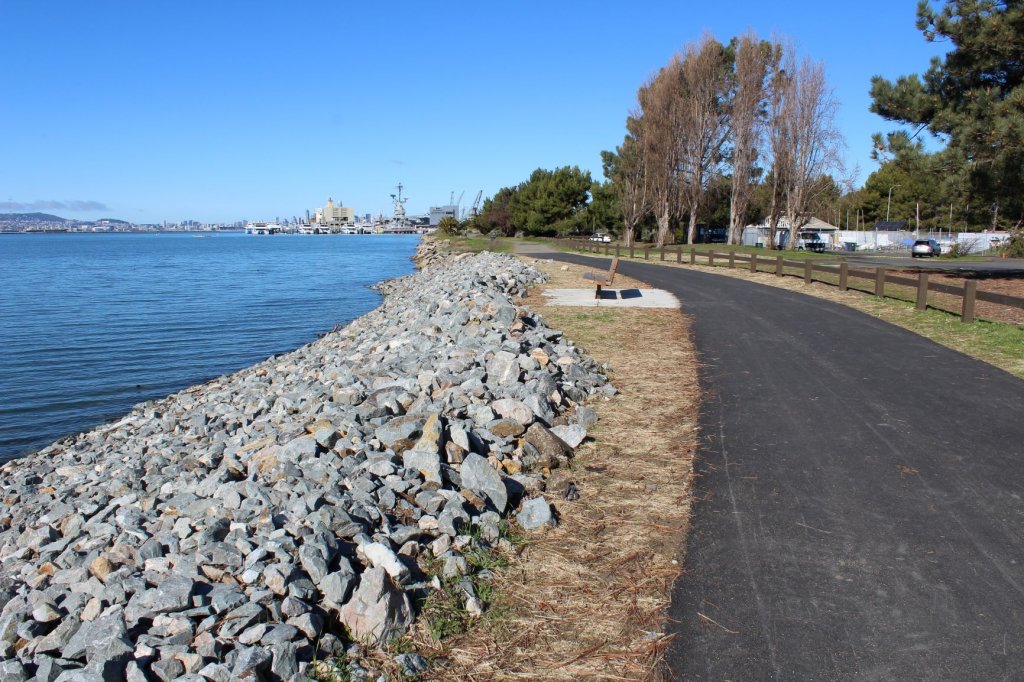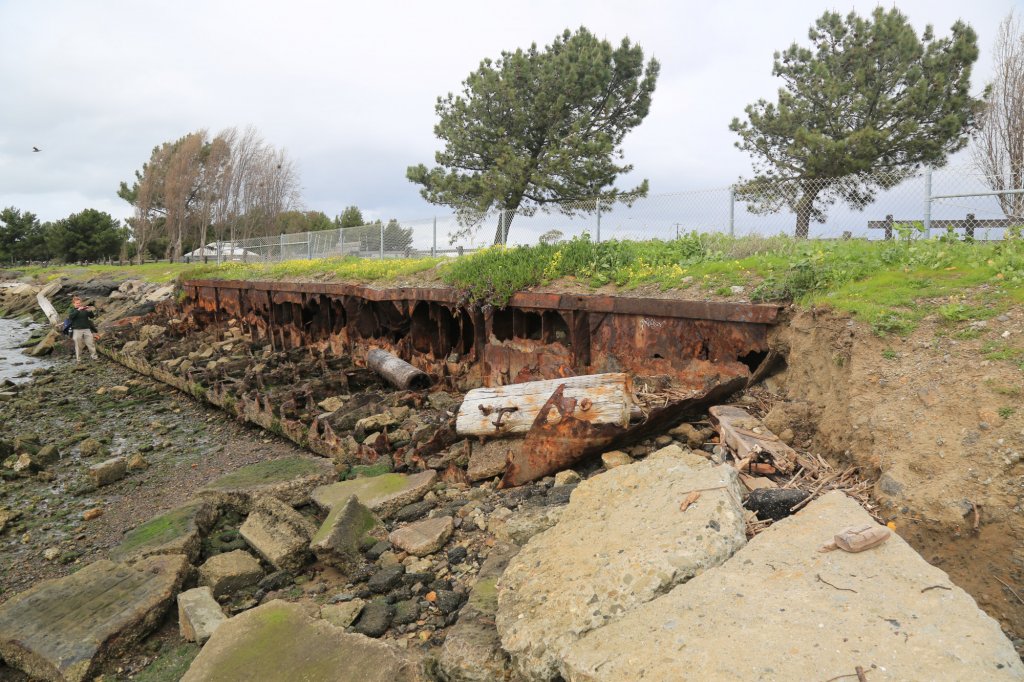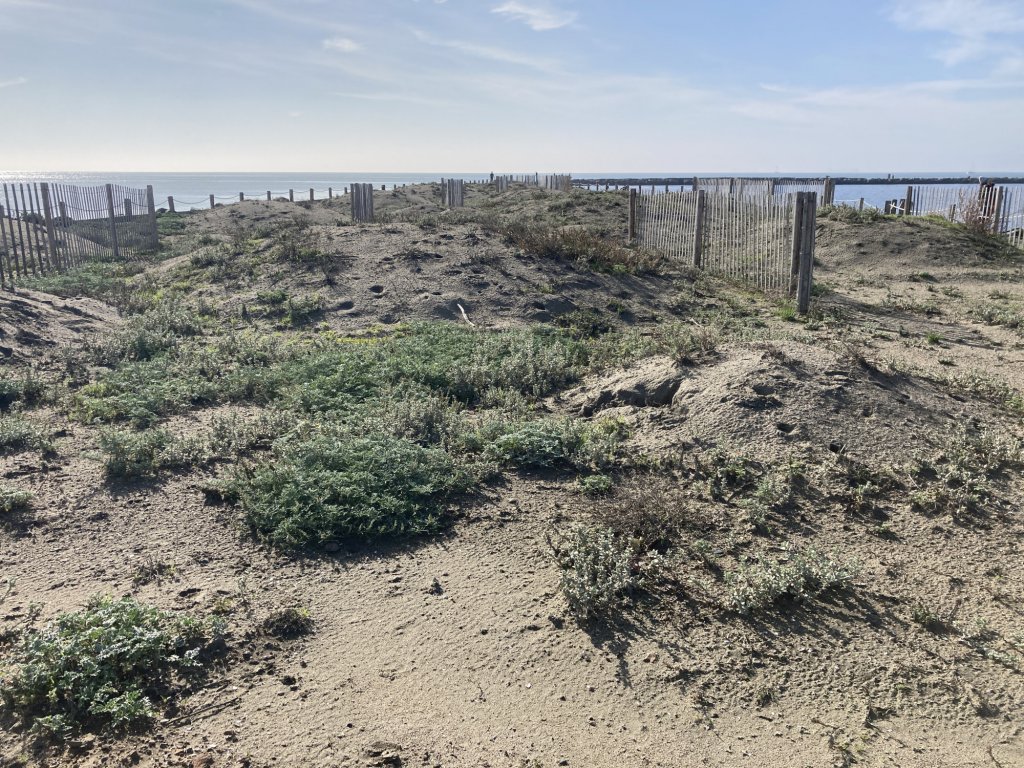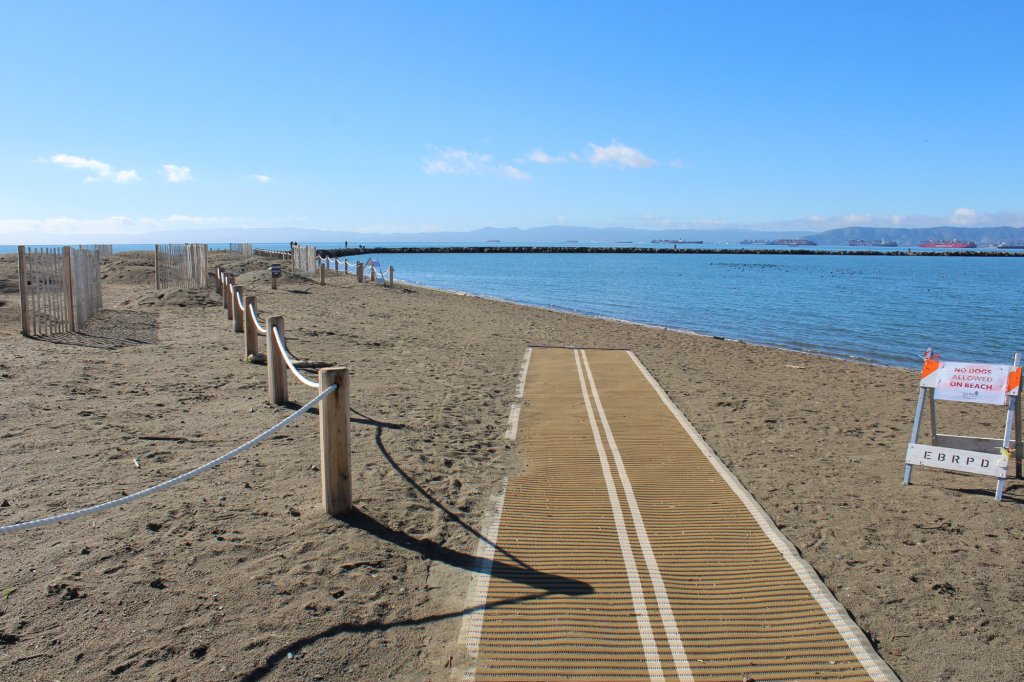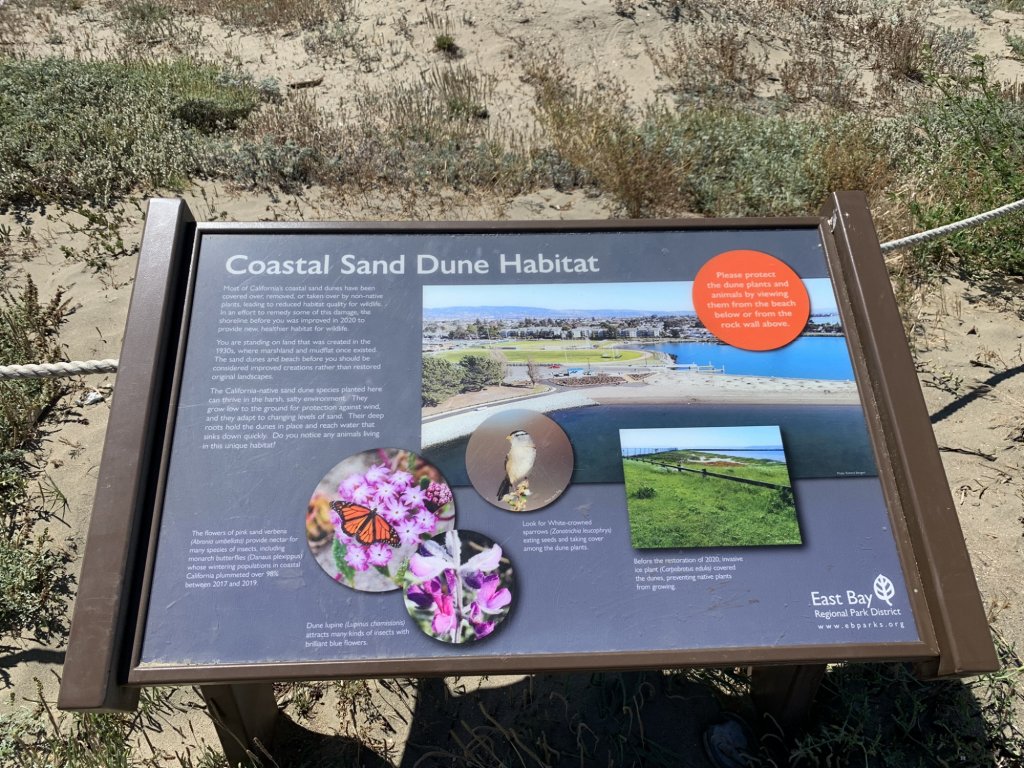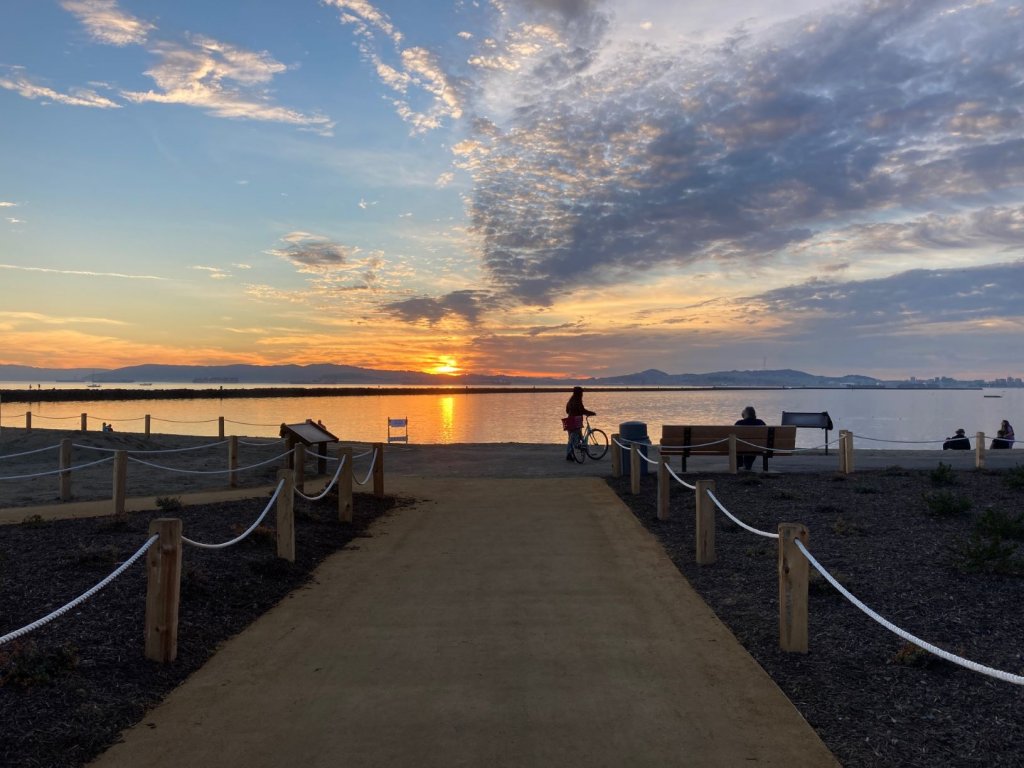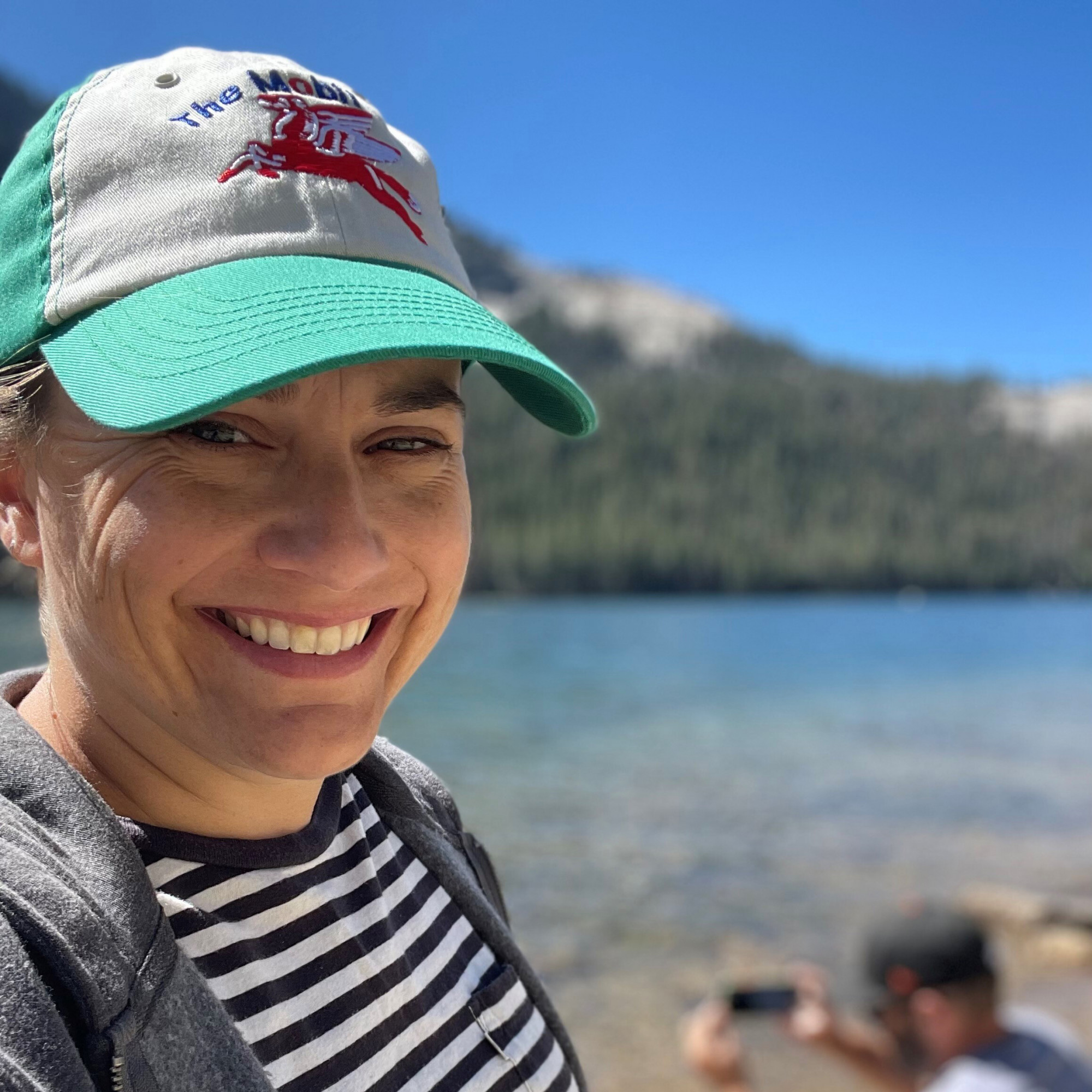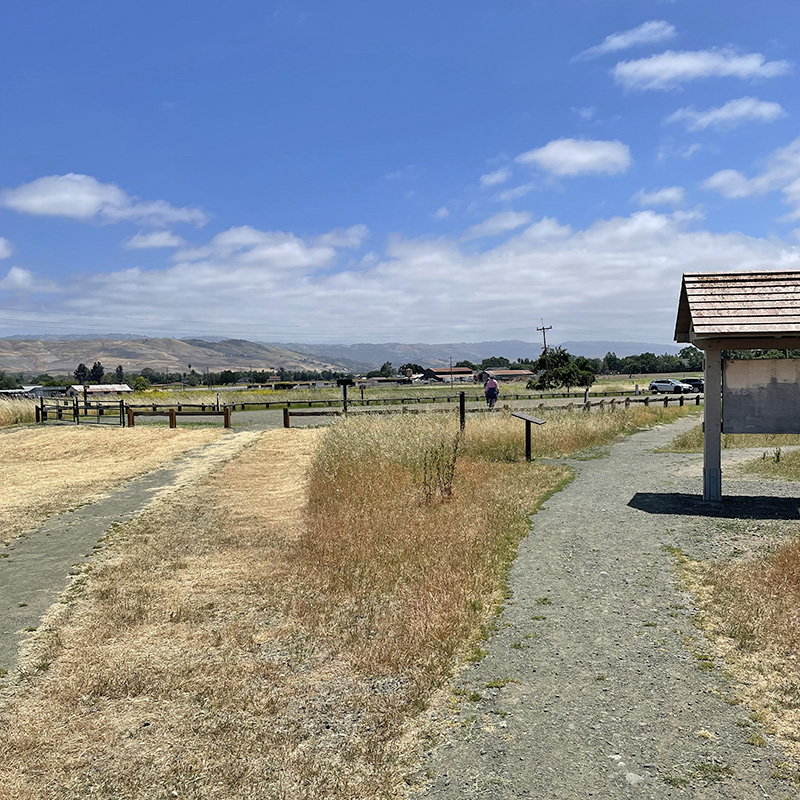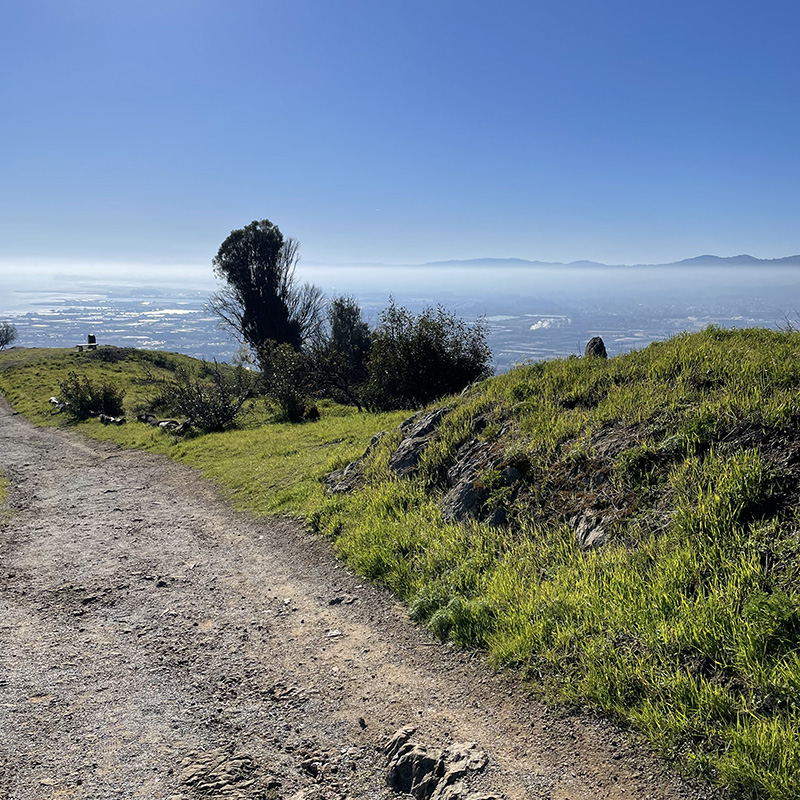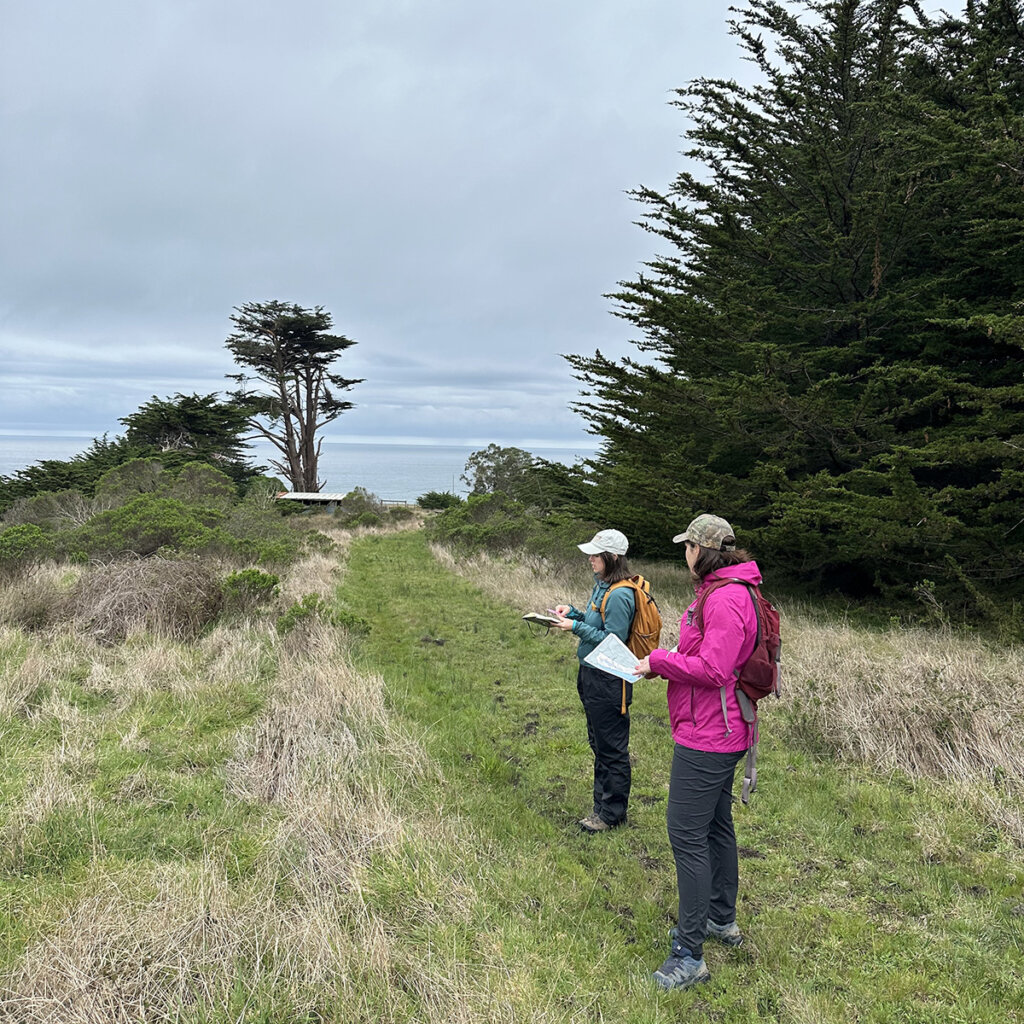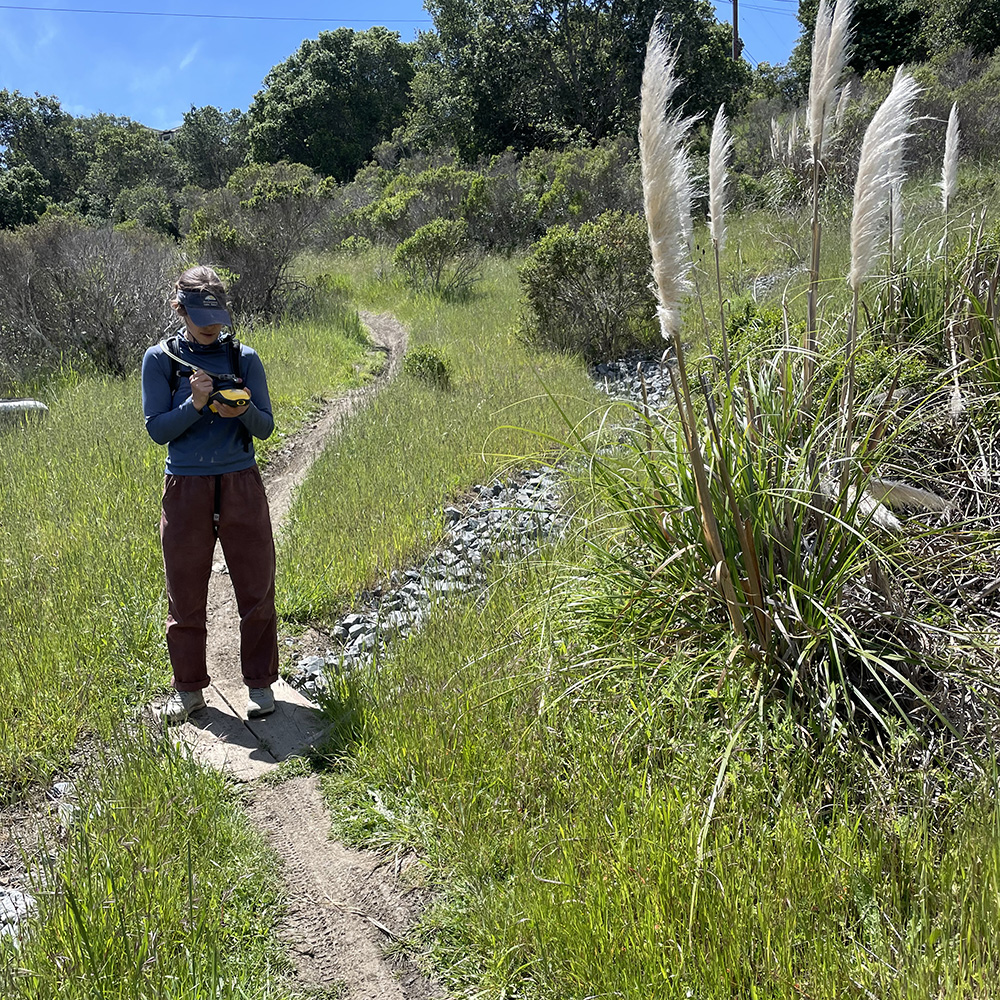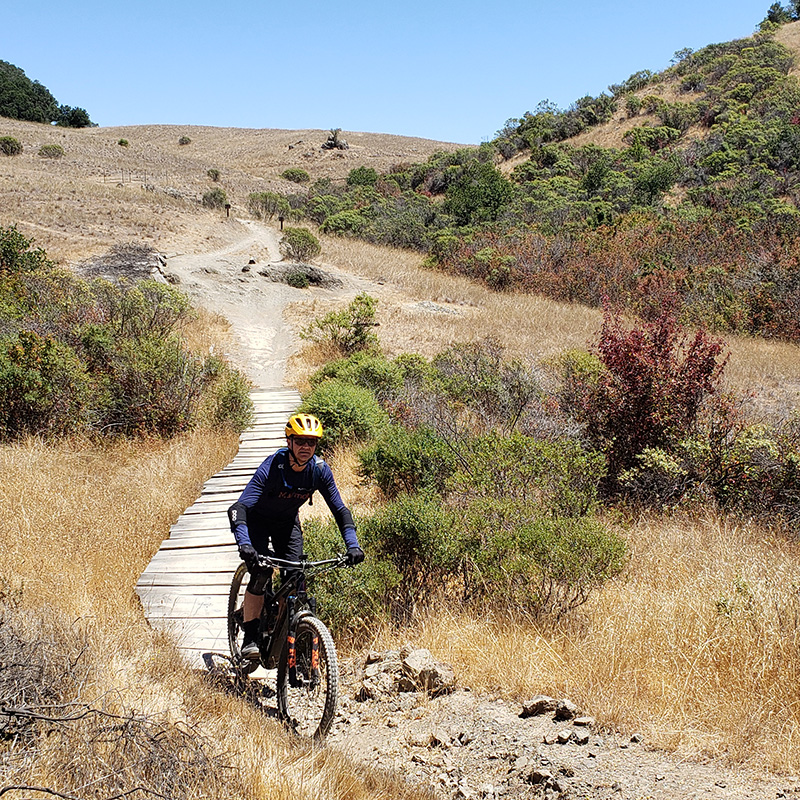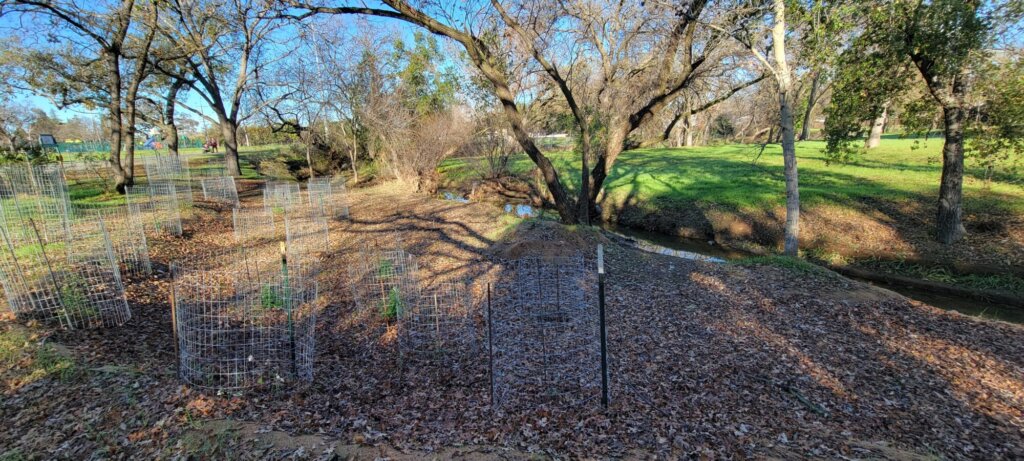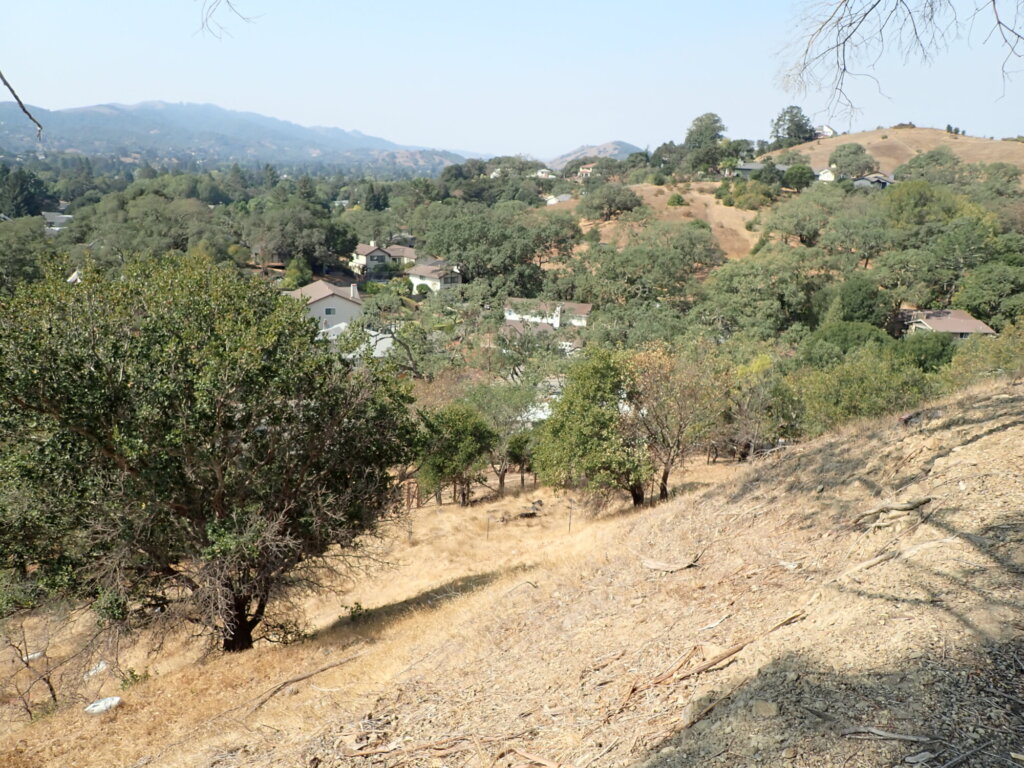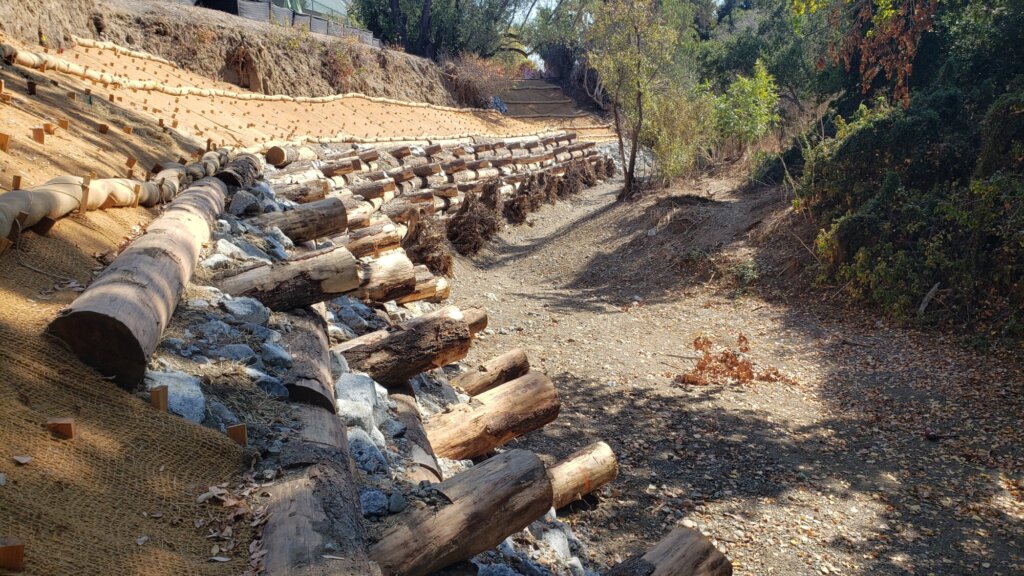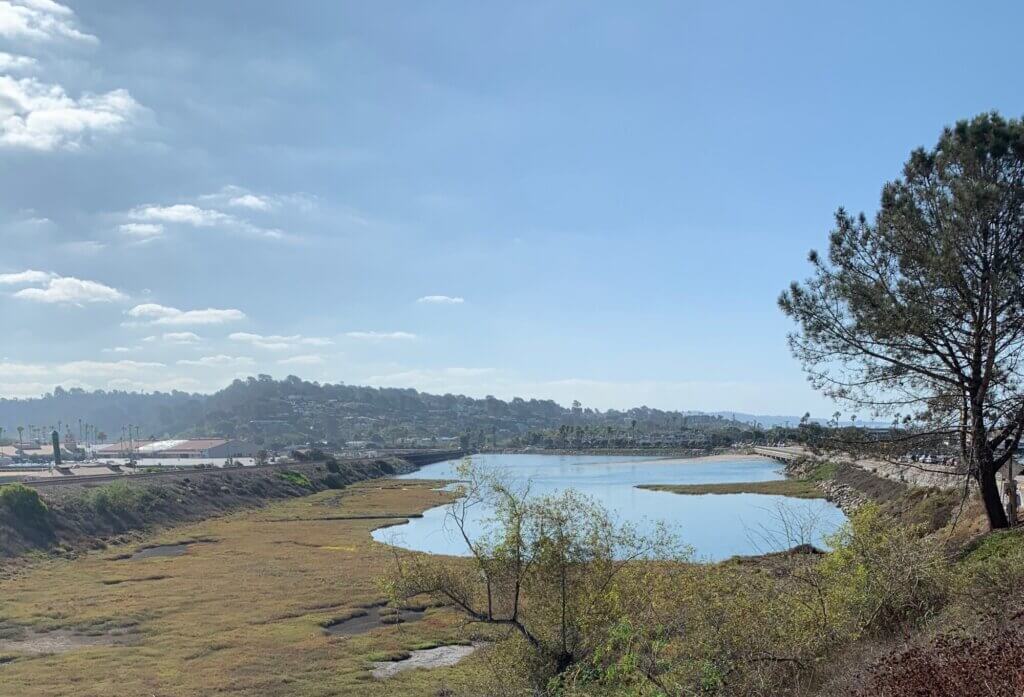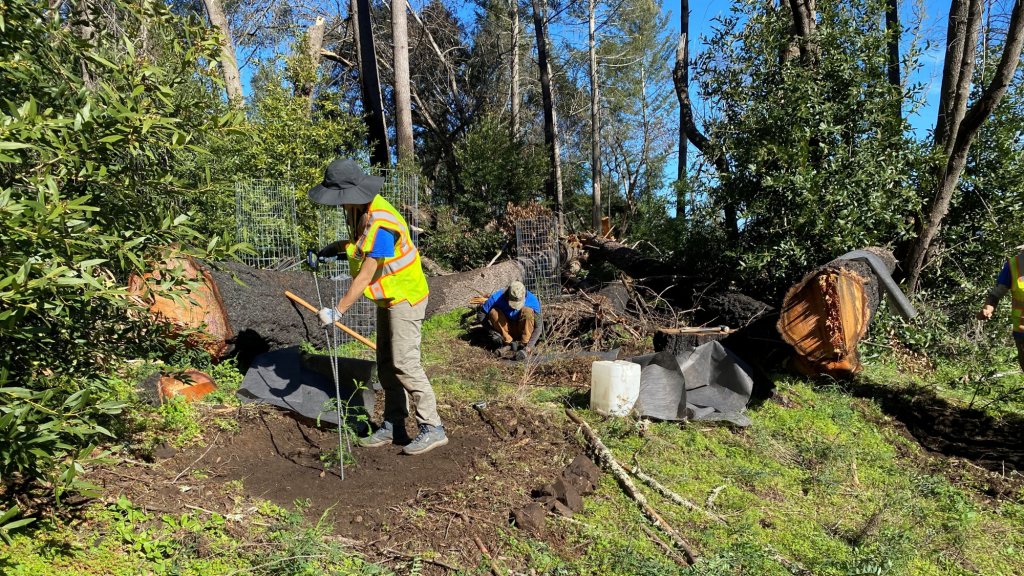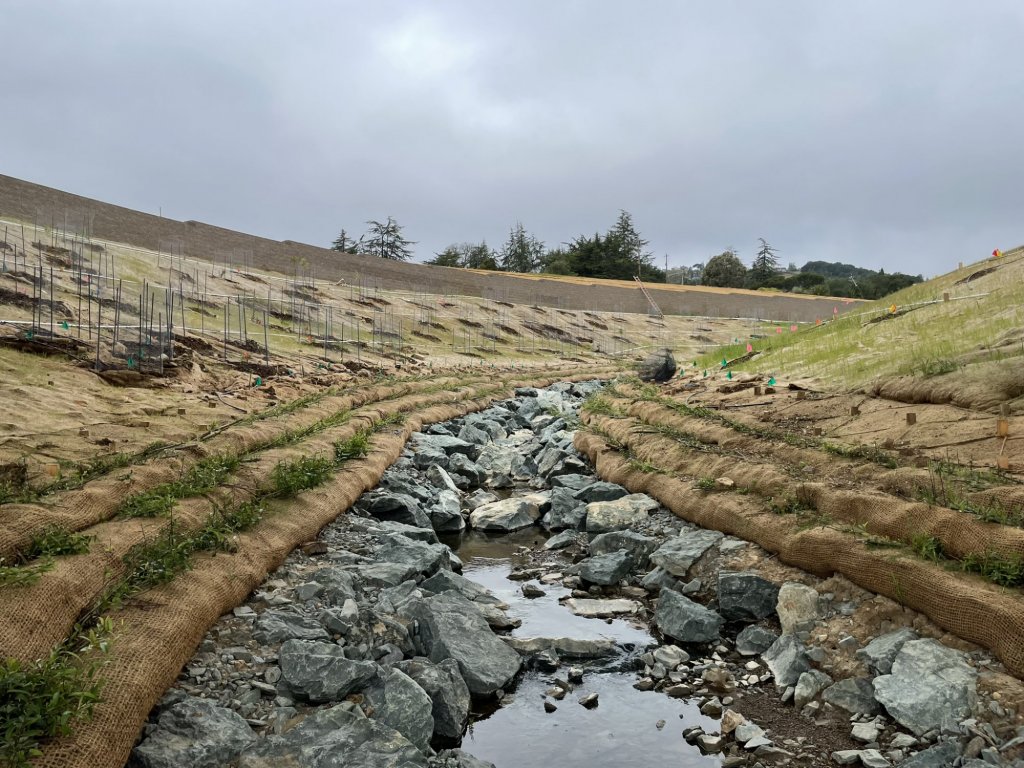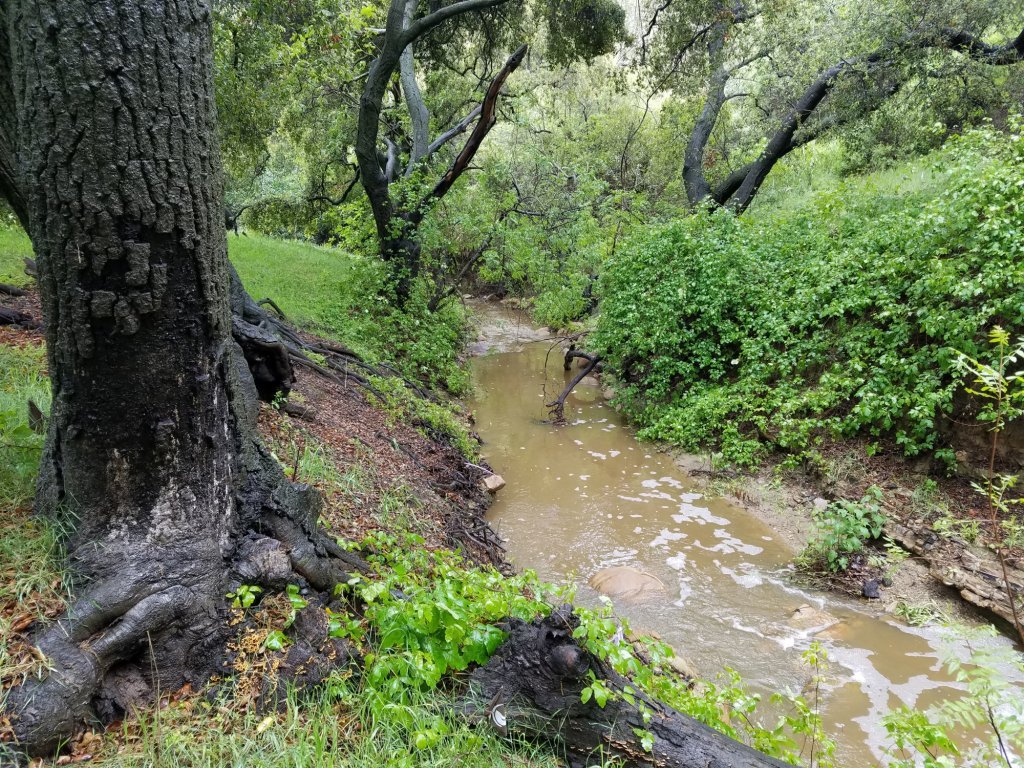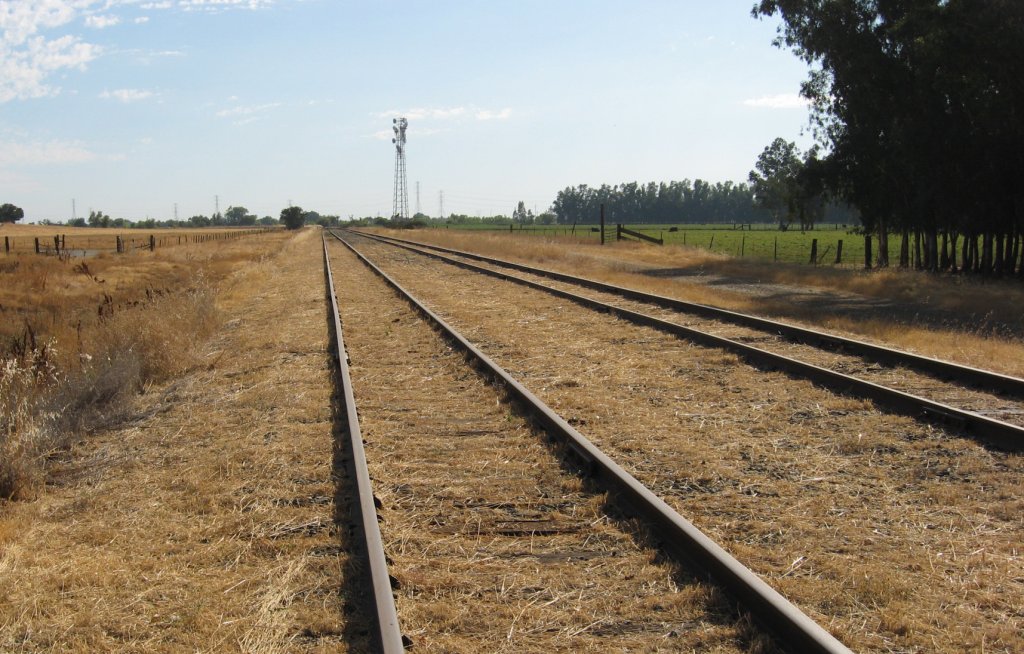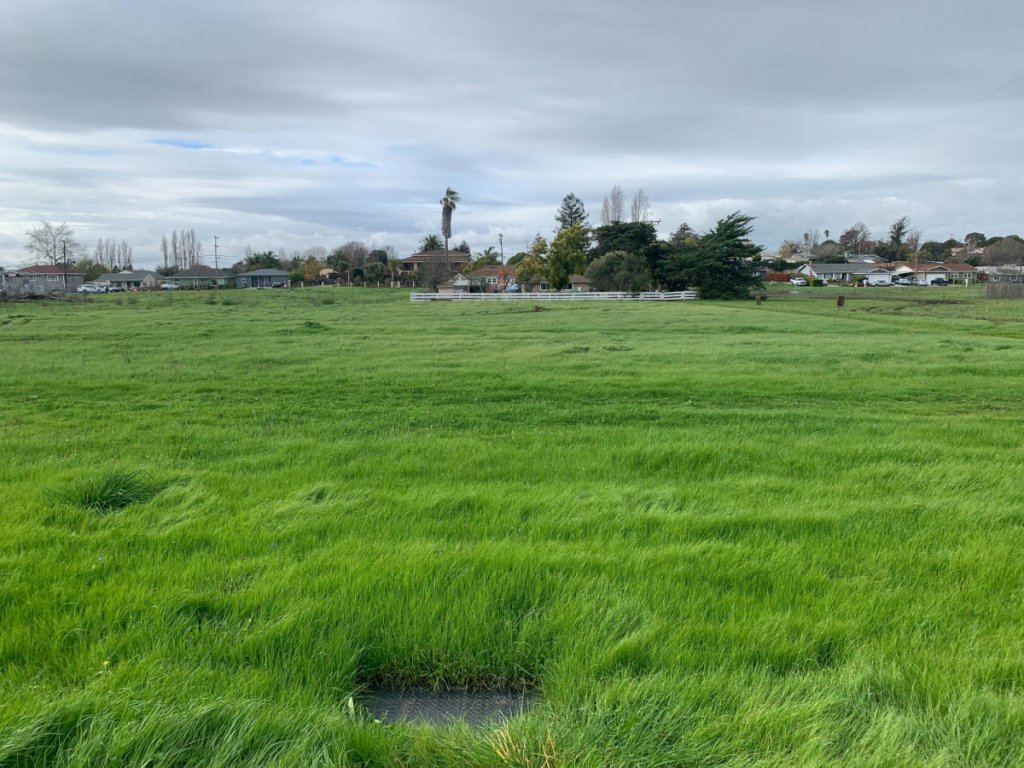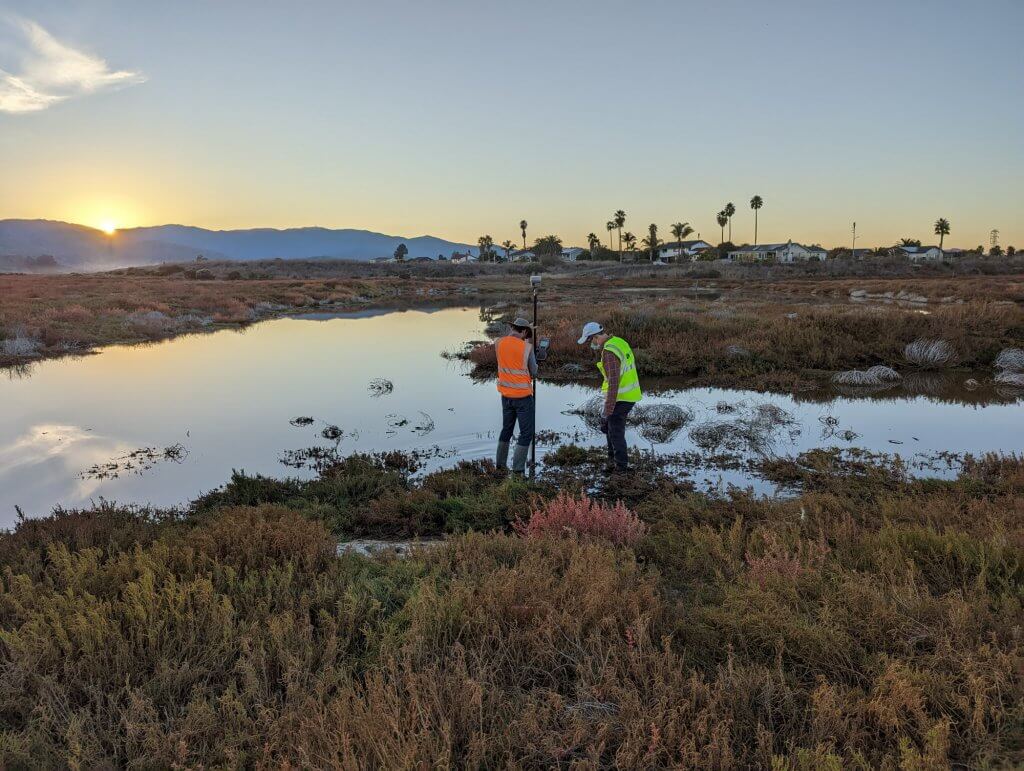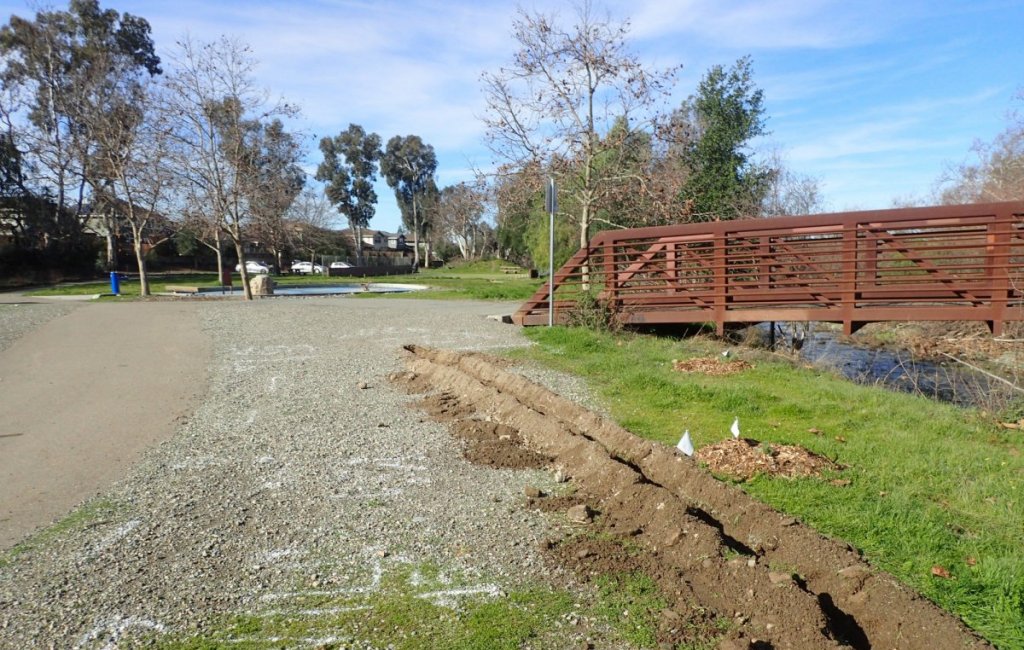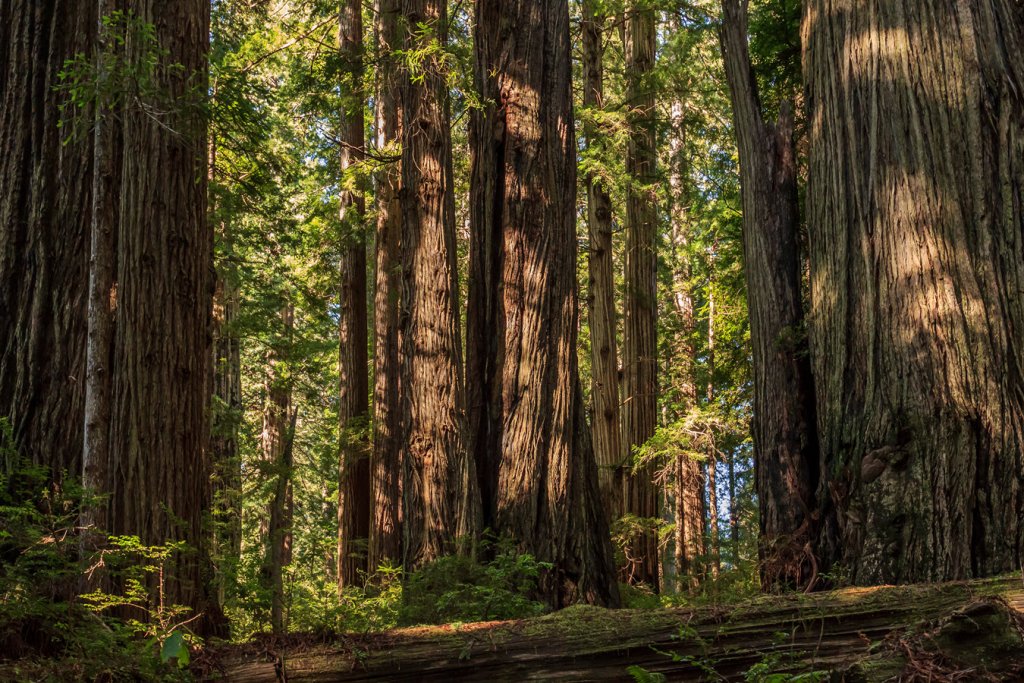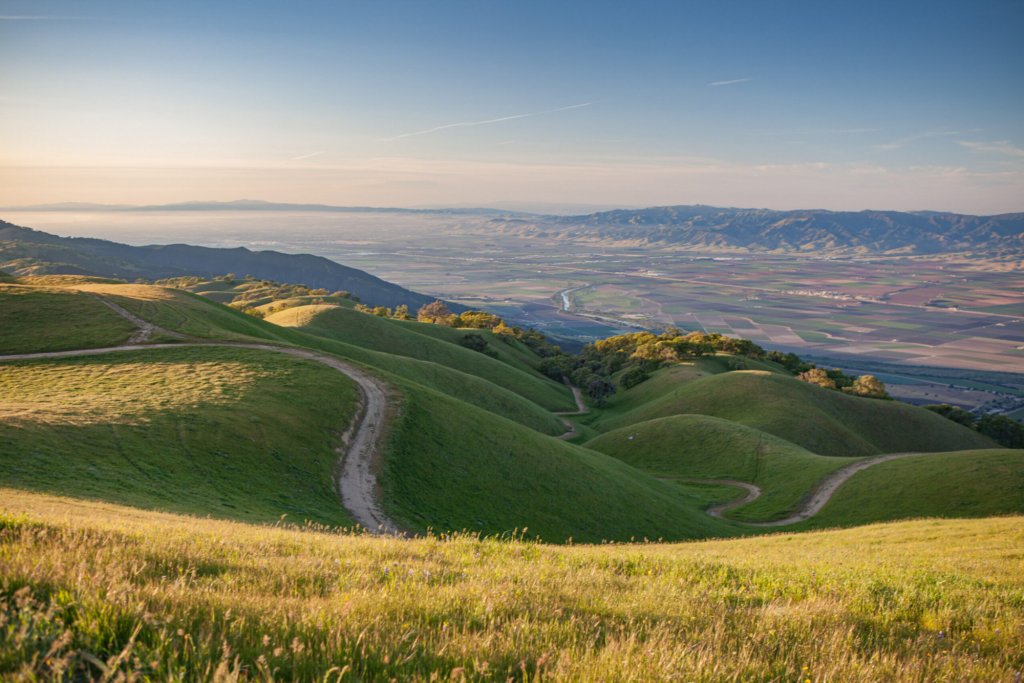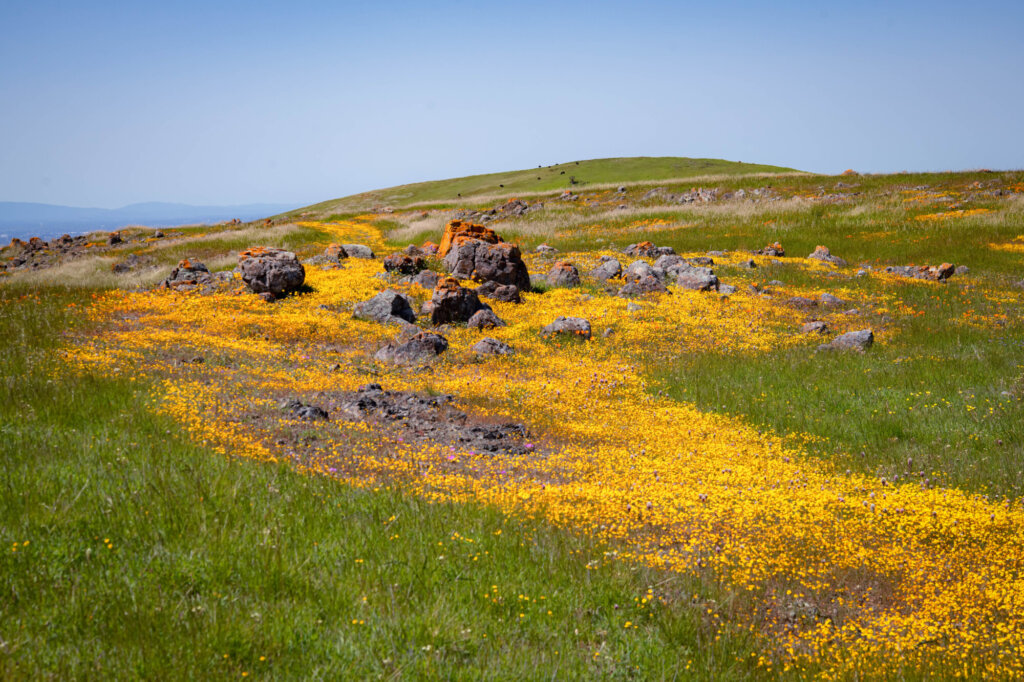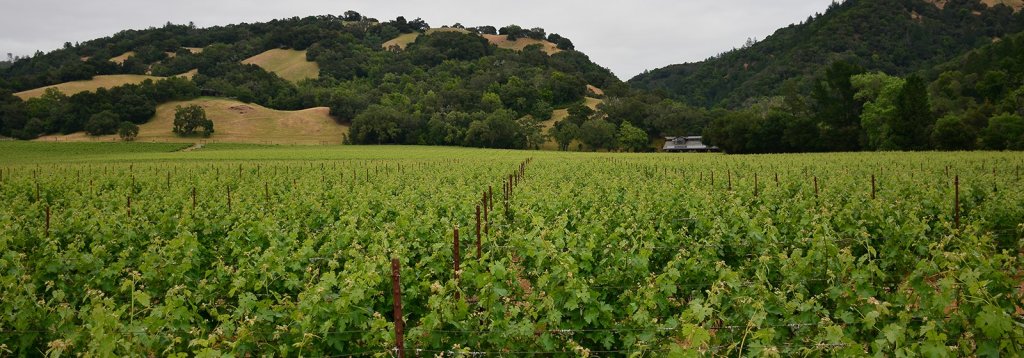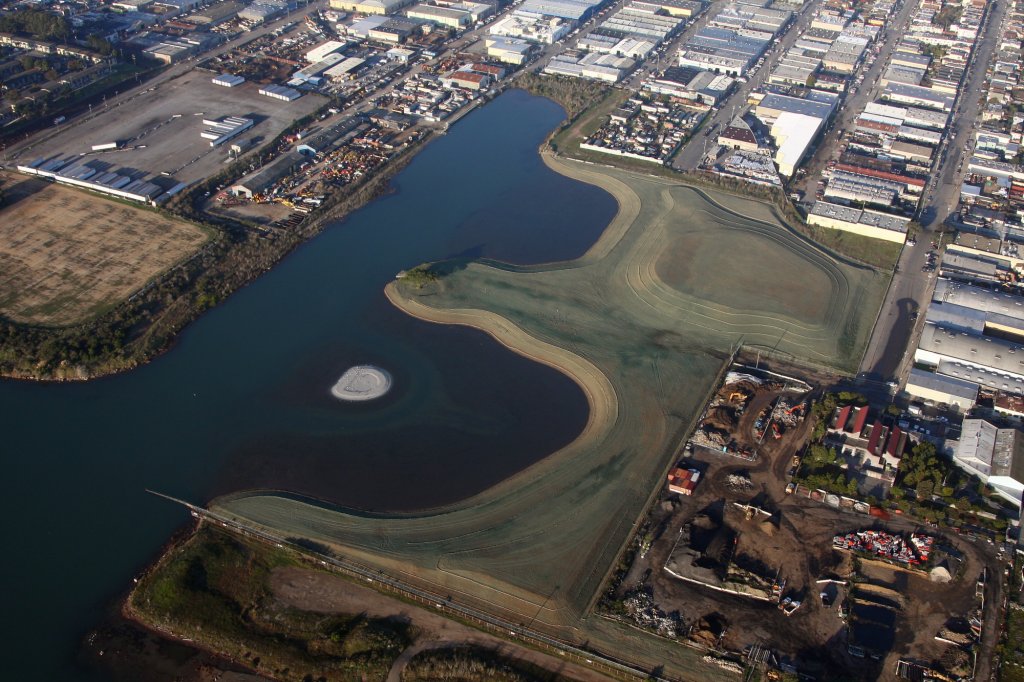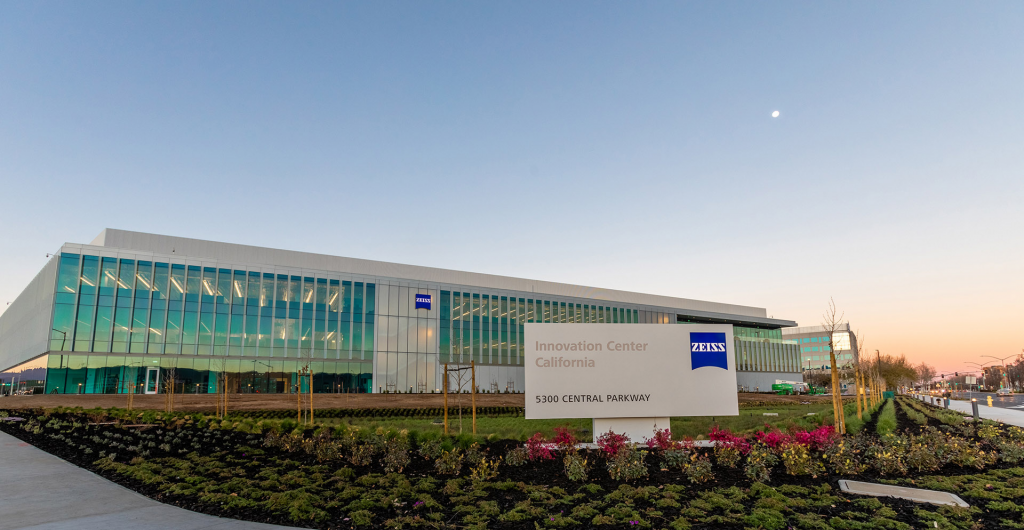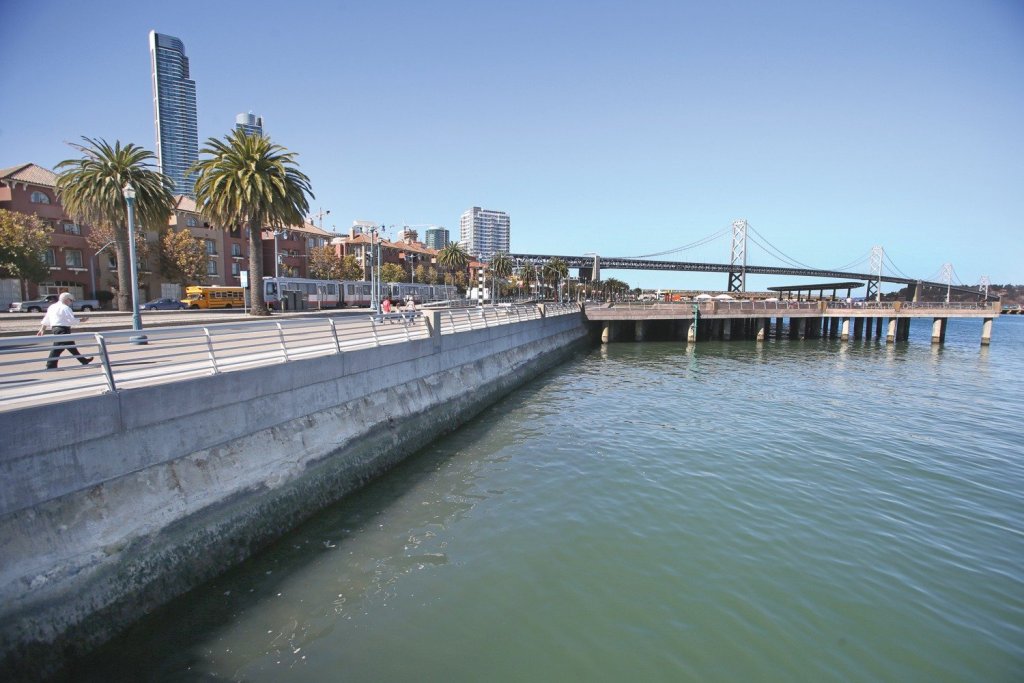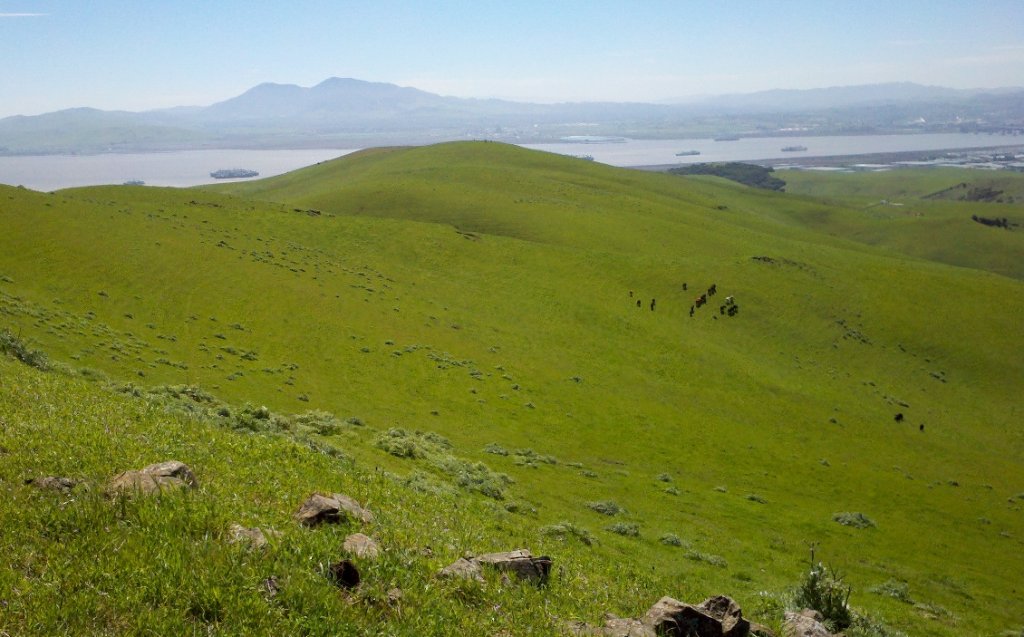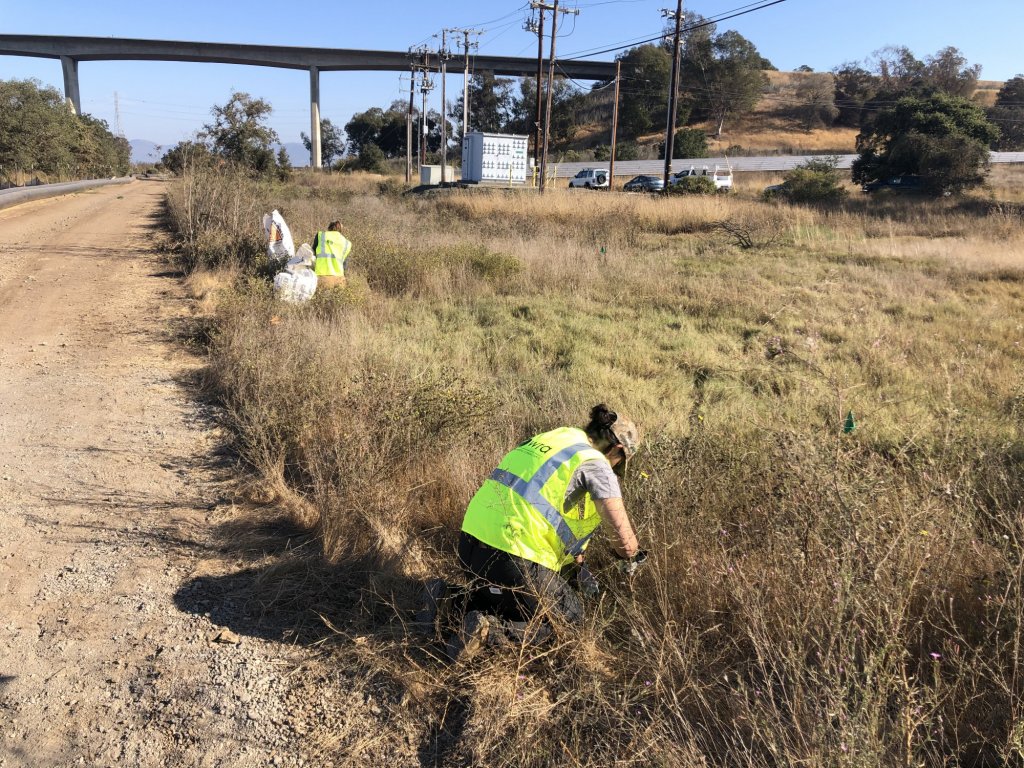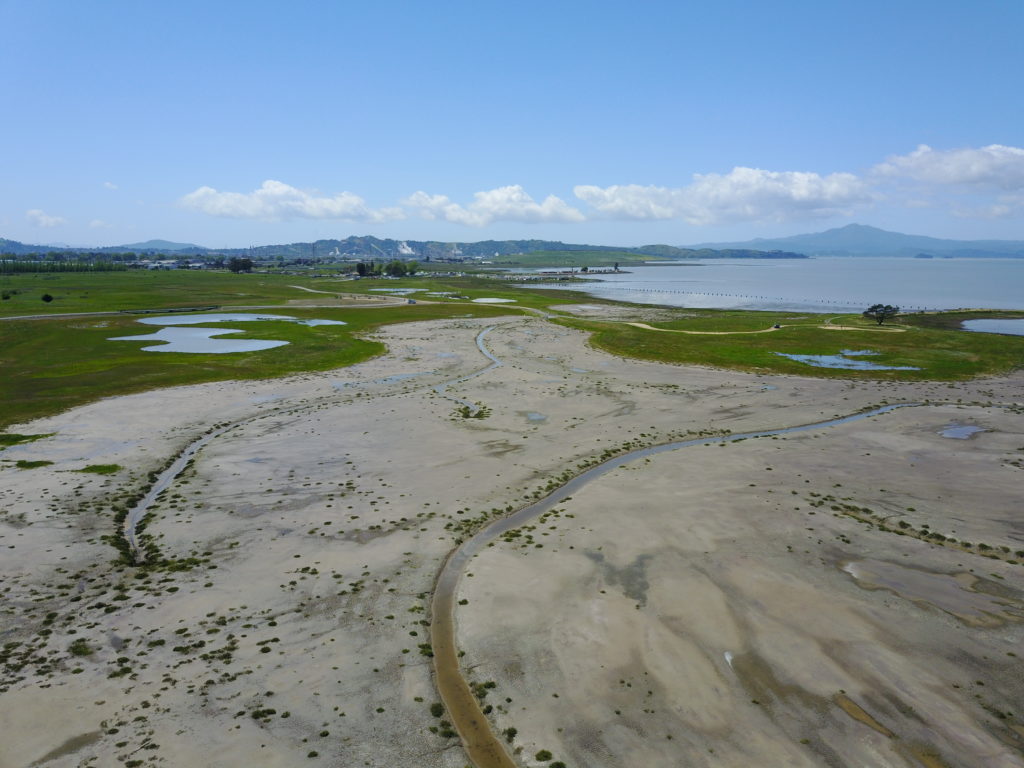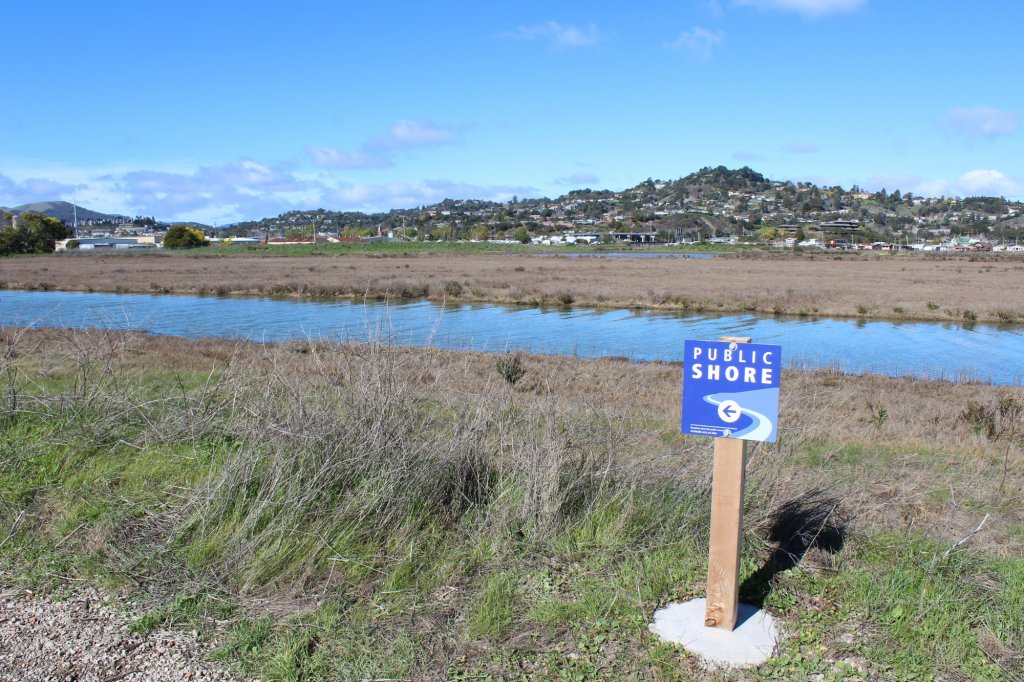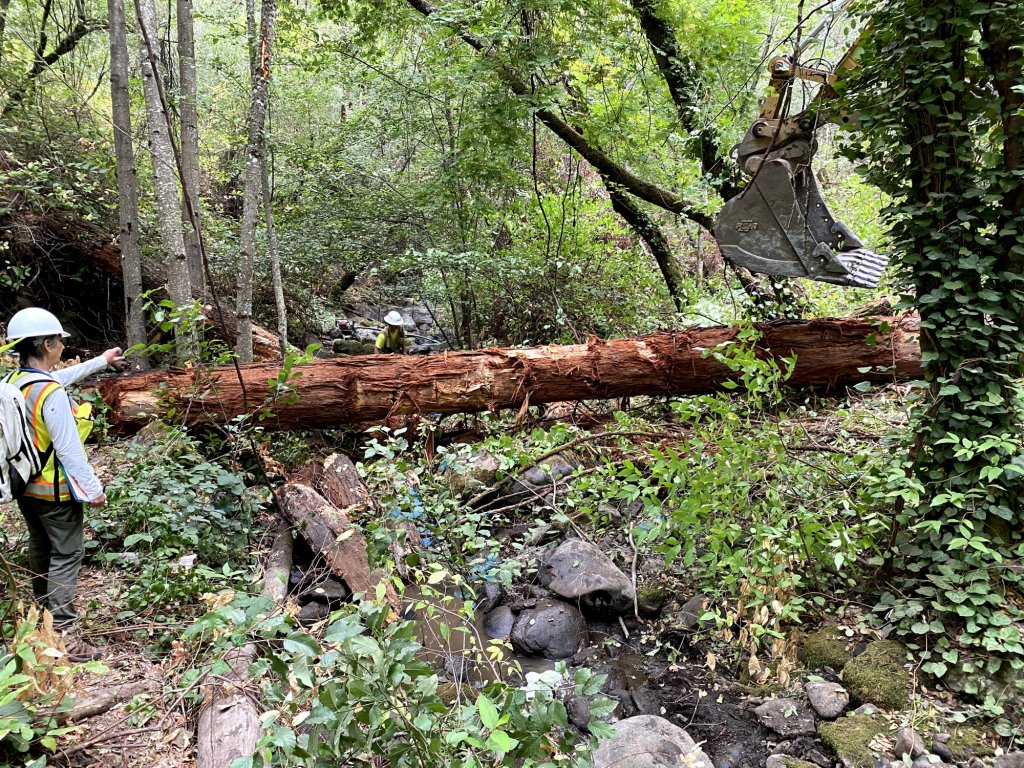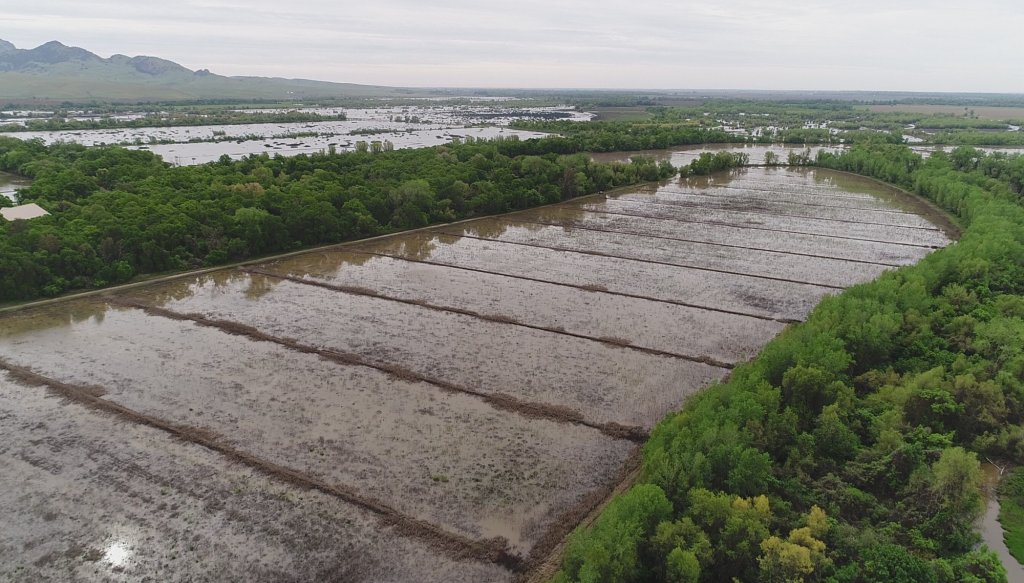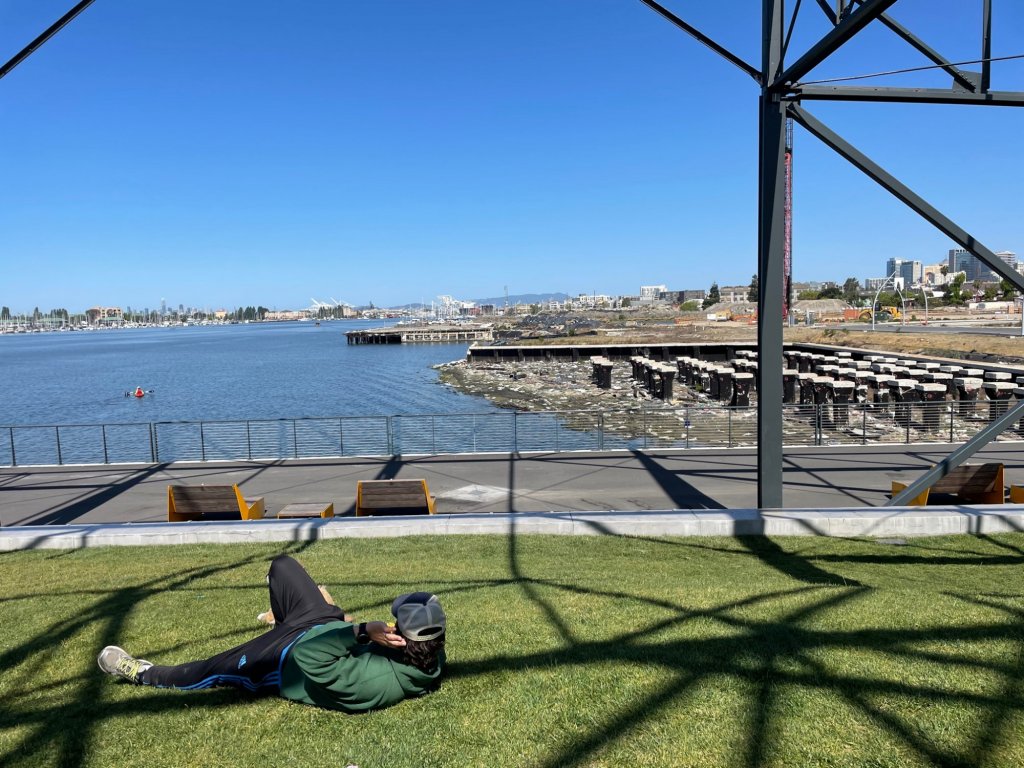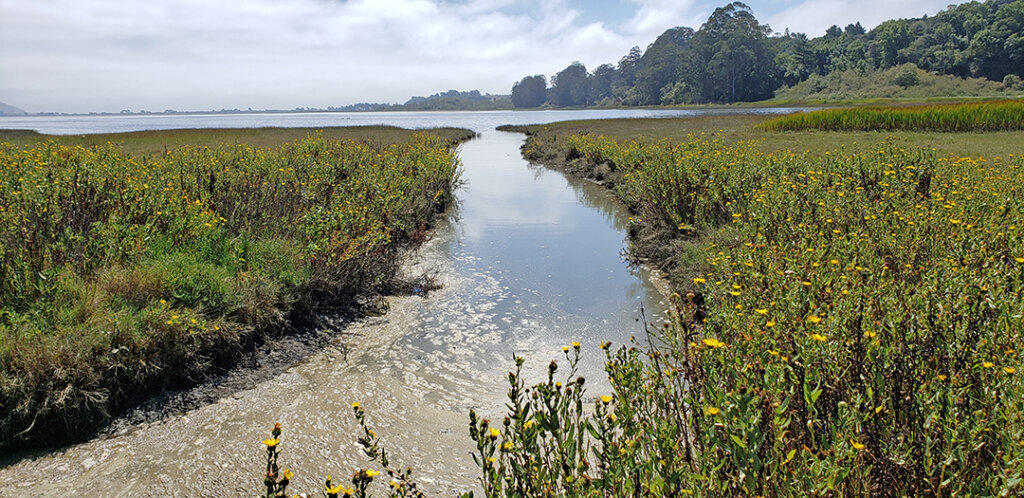Our Projects
Encinal Beach Dune Restoration and Shoreline Stabilization
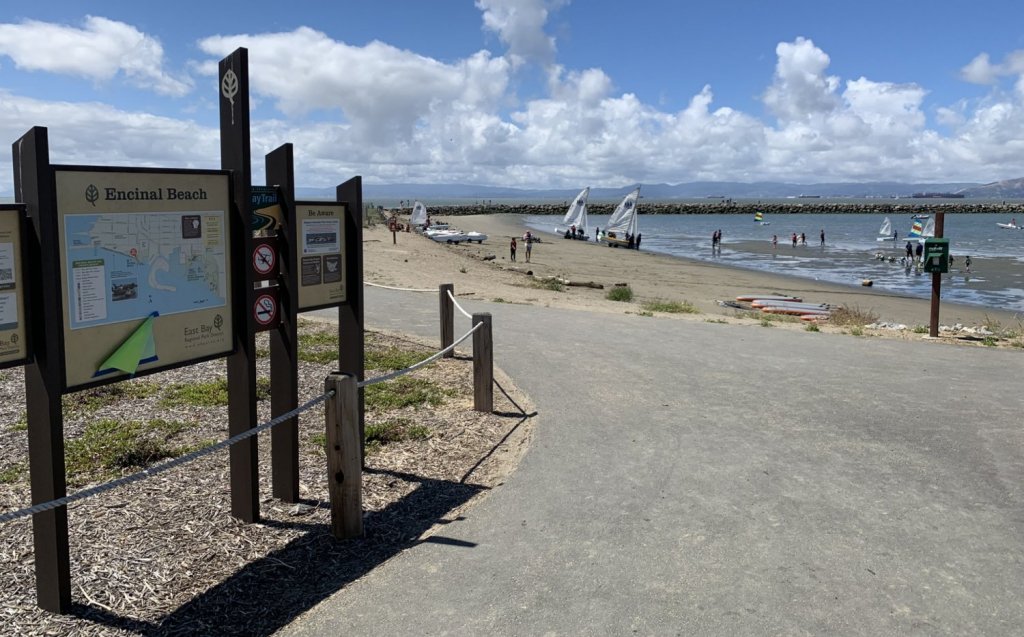
Goal
Restore the local dune habitat and stabilize the eroding and steep slopes along sensitive coastal habitat while enhancing recreational opportunities and public beach access for a popular non-motorized watercraft launch site.
Encinal Beach is a two-acre park on the south facing shores of Alameda Island. The small park provides a safe put-in/take-out point for the Bay Water Trail and is one of the few East Bay launching points for non-motorized watercraft directly into San Francisco Bay.
The overall project included: geomorphic reshaping and augmentation of dunes, native seeding and planting sand dune restoration, stabilization of steeper shoreline embankments in anticipation of sea-level rise, removal of shoreline debris, enhancement of park and small boat facilities, and continued pedestrian access on Alameda Point Trail. A main component of the project was to maintain the recreational access of the site while restoring the local dune habitat and stabilizing the eroding and steep slopes.
Approach
The multi-disciplinary team designed and oversaw construction of this project to enhance the health of the shoreline, improve resiliency to sea-level rise, protect the sensitive habitat, and enhance visitor experience.
WRA served as prime consultant and led the dune restoration and trail/landscaping improvements, environmental review, regulatory permitting, and construction oversight. WRA’s
technical services included a Biological Resources Assessment and a wetland delineation. WRA’s landscape design team developed the dune restoration and park revitalization design from concept to construction documents including cost estimating, bid support, and oversight during construction. WRA’s planning team provided the CEQA Project Description and IS/MND and regulatory specialists obtained permits from the U.S. Army Corps of Engineers (Section 404), Regional Water Quality Control Board (Section 401), National Marine Fisheries, and U.S. Fish and Wildlife Service.
Supporting the project, Moffatt and Nichol designed the shoreline protection and beach nourishment aspects of the project and Power Engineering served as the contractor.
During construction, the rusty barge and debris were removed from the shoreline, then the steep shoreline was stabilized with rock and cobble revetment to prevent further erosion. Invasive plants were removed and dunes were regraded. Sand was imported to raise the elevation of the beach and increase accessibility year-round.
In the dune area, circular mounds, or “hummocks”, of varying sizes were constructed to create habitat for dune wildlife and plant species. To mitigate sand loss from the wind, fences were strategically placed around the dunes to trap and anchor sand, thereby preventing erosion. Native plant species and trees were planted around the project area, improving the overall aesthetics of the park.
Impact
This restored park has been restored with features to benefit coastal habitat and native species while visitors have enhanced access to this park for recreating.
The stabilized shoreline will protect against future erosion while restored spaces were enhanced for the coastal habitat and native species. Visitors to the park can now enjoy the newly resurfaced Bay Trail, interpretive signage, and benches throughout the 2-acre area and enjoy year-round accessibility to the beach areas for recreating and non-motorized sport.
Read our field notes article for more on this important restoration and public access project.
Experts
Project Specifics
Markets
Project Partners
Status
Detailed Services
Restoration engineering
Park planning and design
CEQA
Regulatory permitting




